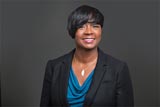As a consultant working with Advancement teams across higher education and healthcare, I’ve learned that maintaining peak performance requires discipline. Each morning, I prioritize exercise, proper nutrition, and adequate rest—not because these activities are delightful but because they enable me to bring my best self to client engagements.
When I walk into a meeting with Advancement leadership regarding their Constituent Relationship Management (CRM) platform, I must be alert, present, and ready to provide strategic guidance. My physical maintenance routine isn’t just personal—it directly impacts my professional effectiveness as an Advancement CRM consultant and the value I deliver to my clients.
Your Advancement CRM platform and donor relationships require the same disciplined approach to maintenance.
The Silent Decline of Neglected Systems
Many Advancement operations are running CRM platforms that haven’t been updated in years. The system still functions—donors are thanked, gifts are processed, and reports are generated—but problems are accumulating beneath the surface.
This neglect creates real organizational pain that often goes unaddressed until a crisis occurs.
- Declining User Adoption: Your team silently develops workarounds when the system doesn’t meet their needs. These shadow processes fragment your data and undermine your CRM’s purpose.
- Increasing Security Vulnerabilities: Outdated systems expose your donor data to modern cybersecurity threats—risks that can damage trust and hinder donor relationships for years.
- Opportunity Cost: While you manually handle tasks that newer versions automate, your peers are using new features—like AI-driven donor relationship scoring, mobile-ready fundraising tools, and improved analytics—to deepen relationships and increase giving.
Routine Maintenance vs. Emergency Surgery
When organizations delay CRM upgrades (whether Advancement RM from Affinaquest or Ascend from Kindsight), they aren’t saving money—they’re accumulating technical debt.
Eventually, small problems snowball into major issues:
- Upgrades become monumentally complex and risky.
- Your team faces major project work on top of daily responsibilities.
- Consulting and remediation costs skyrocket.
- You risk disruption during key fundraising periods.
Picture this: You launch your annual giving campaign—only to have online gifts slow to a crawl because your CRM can’t support the latest giving form technology. A preventable technology failure could cost your institution thousands—or millions—of dollars in donor goodwill and missed gifts.
The Executive’s Guide to CRM Health
Maintaining your Advancement CRM isn’t just about avoiding problems—it’s about building a stronger, more resilient operation. Here’s what a disciplined approach to CRM health looks like in practice.
- Establish a Regular Upgrade Cycle: Create a predictable upgrade schedule. Treat upgrades as essential operational maintenance—not special projects that only happen when something breaks.
- Budget for Continuous Improvement: Include system upgrades and maintenance in your annual operational budget. Prioritize this investment like you would staffing, training, or major campaigns.
- Celebrate the Wins: When your team completes an upgrade, recognize it! Each successful update represents risk mitigation, improved functionality, and your organization’s commitment to excellence.
Common barriers, like budget constraints, staff bandwidth, or the fear of disrupting customizations, are fundamental but manageable. By planning ahead and working with trusted partners, you can minimize disruption and maximize gains.
What Regular Upgrades Unlock
Beyond stability and security, regular CRM upgrades open the door to powerful new capabilities that directly impact donor relationships and fundraising success.
What are you missing? Some benefits of staying current include:
- More intuitive user interfaces that drive higher adoption
- Enhanced mobile access for frontline fundraisers
- Automated workflows that reduce manual data entry
- Advanced reporting and predictive analytics
- New integration capabilities with email marketing, wealth screening, and event tools
- Stronger security protocols
These features make operations smoother and directly impact your ability to raise more money and steward donor relationships more effectively.
The Competitive Advantage of a Healthy CRM and Donor Relationships
Advancement industry demands are intense, and the pressure to deliver results has never been greater. Your CRM platform isn’t just a database—it’s the technological foundation that supports every relationship, campaign, and dollar raised.
By maintaining your CRM with the same discipline you apply to your health, you’re not just avoiding problems but actively creating a competitive advantage.
Ready to Act?
- Audit your CRM’s current version and last upgrade date.
- Identify gaps between your current functionality and newer features.
- Build a 12–24-month upgrade roadmap aligned to your Advancement goals.
A healthy CRM enables a healthy Advancement operation, which means greater fundraising success, stronger donor relationships, and a team empowered to fulfill your institution’s mission.


